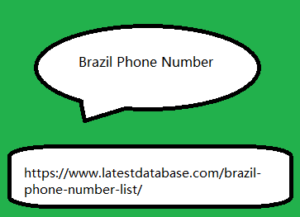Post by afifatabassum on Mar 10, 2024 23:10:49 GMT -5
As competitiveness increases, eCommerce marketing needs to evolve. Stop just talking about advertising, outbound or paid marketing, it's time to build relationships between company and users. Companies that adopt inbound eCommerce marketing strategies are able to generate greater value (especially in the medium and long term) and offer a better user and customer experience before, during and after the purchase. It was 2012 when Relevance talked about eCommerce inbound marketing . However, this topic has never found much space until today. Let's try to understand why. Relevance started from a first fundamental distinction: non-eCommerce inbound marketing activities and those for eCommerce.
The first category included all activities related to lead generation Brazil Phone Number and lead nurturing , therefore SEO, social media marketing, content marketing , CTA and landing pages . What fell into the second category instead? Learn more now, buy when you're ready... Given that not all eCommerce stores have the same purchasing process, addressing different users with different customer journeys , it is important to adapt inbound marketing activities to different realities. For this reason Relevance distinguished three different inbound marketing strategies.

Traditional inbound marketing activities (Learn more/Buy later) . In this case the main objective of the company is not to sell, but to inform the user. In 2010 Lauren's Hope managed to increase sales by 40% compared to the previous year by attracting 1,300 subscribers to their blog in 5 months. Product-driven inbound marketing activities (Buy Now) . Amazon is a great example. Rather than having a large blog that publishes high-quality, informative content, Amazon creates a lot of visual content like images and videos and relies heavily on product descriptions and reviews left by users. This content is disseminated through multiple channels to encourage lead generation. Value creation occurs through subscribing to the newsletter, downloading the app, obtaining coupons and creating wishlists. In this case the lead nurturing strategy focuses on remarketing activities aimed at encouraging purchases and repurchases.
The first category included all activities related to lead generation Brazil Phone Number and lead nurturing , therefore SEO, social media marketing, content marketing , CTA and landing pages . What fell into the second category instead? Learn more now, buy when you're ready... Given that not all eCommerce stores have the same purchasing process, addressing different users with different customer journeys , it is important to adapt inbound marketing activities to different realities. For this reason Relevance distinguished three different inbound marketing strategies.

Traditional inbound marketing activities (Learn more/Buy later) . In this case the main objective of the company is not to sell, but to inform the user. In 2010 Lauren's Hope managed to increase sales by 40% compared to the previous year by attracting 1,300 subscribers to their blog in 5 months. Product-driven inbound marketing activities (Buy Now) . Amazon is a great example. Rather than having a large blog that publishes high-quality, informative content, Amazon creates a lot of visual content like images and videos and relies heavily on product descriptions and reviews left by users. This content is disseminated through multiple channels to encourage lead generation. Value creation occurs through subscribing to the newsletter, downloading the app, obtaining coupons and creating wishlists. In this case the lead nurturing strategy focuses on remarketing activities aimed at encouraging purchases and repurchases.

